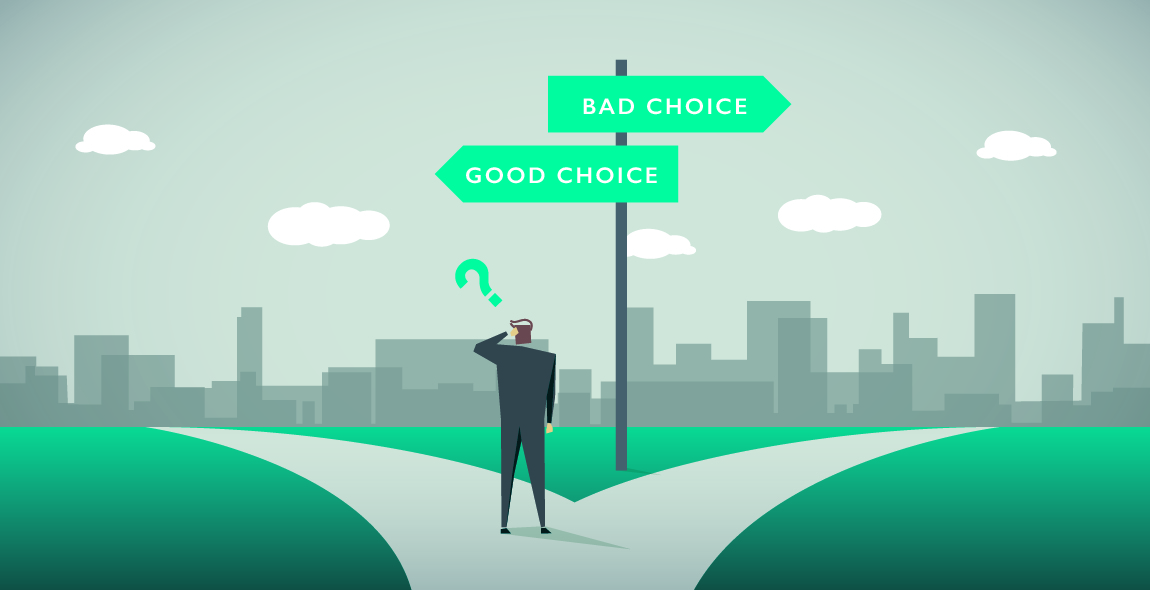Blog:
After the Brexit vote: A perspective from behavioural science
After the shock of the Brexit vote, many people have been asking themselves ‘how did we get here?’... →
For general enquiries please contact us on
+44 1223 248888
enquiries2025@innoviatech.com
St Andrew's House, St Andrew's Road
Cambridge CB4 1DL United Kingdom
FIND US
Behavioural science has become a hot topic, but as with any new, powerful tool, there is the possibility for misuse...

Behavioural science has become a hot topic in recent years. But as with any new, powerful tool, there is the possibility for misuse. Innovia proposes four principles to guide best practice and we would welcome your views on them.
Nudge in the public sector
It started with ‘Nudge’, the seminal book from Thaler and Sunstein that defined nudges as ‘any aspect of the choice architecture that alters people’s behavior in a predictable way without forbidding any options or significantly changing their economic incentives’. What this means in practice is that policy makers, and increasingly business leaders, especially R&D and marketing professionals, present information in such a way as to take advantage of predictable patterns of behaviour to encourage people to make a particular choice without actually having to coerce them.
This approach has been regarded as a great success. It has been used by the public sector to reduce error rates in medical prescribing, to increase the number of people paying their income tax on time, and to get people to save energy in the home.
Nudge goes private
The private sector has now started to embrace and apply this knowledge about inherent behavioural biases. For example, marketing professionals have learned about the Rounded-Price Effect (a decision-making bias) where round numbers (e.g. £10) ‘feel right’ for emotional purchases, whereas unrounded numbers (e.g. £9.99) ‘feel right’ for functional purchases. There is also more recognition of the importance of Commitment Bias to winning sales and brand loyalty: people who have made a commitment to a product or a decision don’t like to go back on it, especially if the commitment was made publicly.
For many people, behavioural science seems to have become all about taking advantage of behavioural biases. And there are a lot of them! Wikipedia lists around 180 decision-making, social, memory-related, and other behavioural biases. It is easy for the lay person to think that this is all there is to understanding what drives human behaviour. If we can only understand how people make decisions, we can easily influence them to do what we want by taking advantage of their biases.
Nevertheless, nudging sounds like a good thing. It is relatively easy and cheap to apply and outcomes can be positive, for example when changing apparently ‘undesirable’ behaviours, such as over-eating or not doing enough exercise. But nudging is not without its critics whose main concerns are that nudging is paternalistic, reduces people’s autonomy, and does not respect their choices. Furthermore, many nudges are covert, and so not transparent. And what happens if the people who are doing the nudging turn out to be wrong?
How can we avoid these potential pitfalls?
The proper use of behavioural science in business
Behavioural science is a powerful tool precisely because it is capable of changing people’s behaviour, so it matters that we use it wisely and are not accused of unreasonably manipulating people against their will or best interests. Obviously, this matters not just for ethical reasons – if the public takes a negative view of a marketing campaign or product design, social media can make it a real problem.
I would make two points about the proper use of behavioural science in business:
First, behavioural science is more than just nudging. Using models and theories of behaviour allows us to go deeper into decision-making processes and get a better understanding of what factors really drive behaviour. At Innovia, we believe that behavioural science is much more than a list of people’s seemingly irrational biases, and that deeper understanding leads to better products and services for consumers. We use behavioural science to design innovative products and services that people really want and are easy and intuitive to use.
Second, behavioural science in the commercial sector can be used for good. Not all nudging has to be manipulative. Behavioural science can help people to make the right choices best suited to their needs, recycle goods more effectively, or eat smaller portions.
Four principles
There is currently no specific legislation about the appropriate use of nudges and behavioural science in either the public or private domain, though consumer protection laws may cover some aspects of this. At Innovia, we have been piloting the use of four principles to help marketing and R&D professionals avoid misuse of nudging and other powerful tools from behavioural science:
This is uncharted territory. What do you think? We welcome your feedback. Please send your comments to hrr_freshperspective@innoviatech.com

I am a consultant with a background in social psychology who leads the behavioural science team. Before coming to Innovia, I managed the international brand consultancy at Leo Burnett Advertising and led the corporate reputation team at Brunswick Group. My PhD concerned how we think about ageing, and I have lectured at the University of Cambridge on this topic. The link between these disparate activities is trying to understand people: why they do what they do when they have said they will do something completely different? And what is it that influences their behaviour? When I am not thinking about human behaviour, I can be found dancing or riding horses – altogether simpler and lot less stressful!